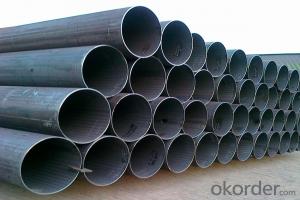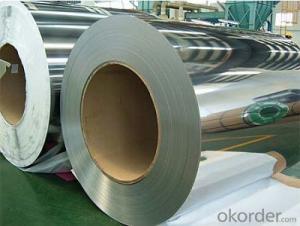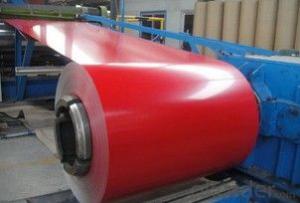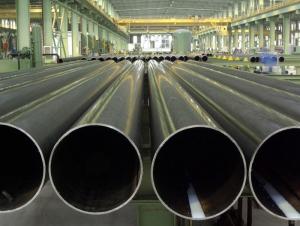THERE ARE HIGH QUOLITY Welded Pipe FOR YOU
- Loading Port:
- Lianyungang
- Payment Terms:
- TT OR LC
- Min Order Qty:
- 50 m.t.
- Supply Capability:
- 1000 m.t./month
OKorder Service Pledge
OKorder Financial Service
You Might Also Like
There are other requirements for the installation of such fire prevention systems, such as that the fire service should be consulted and their advice on a suitable position for those systems to be installed taken. A dry riser system likewise must be situated near a water supply so that adequate flow can be obtained for fire fighting purposes.
However, those regulations for installing a dry riser system in commercial buildings in the UK are not all there is to it.
In addition to those requirements, the law states that dry riser systems also need to be maintained and serviced regularly. And this is where we’re getting to the subject of dry riser testing.
Obviously, dry riser testing must be performed by qualified and certified professionals. As a business owner, you will normally have a contract with a firm that conducts those tests on a regular basis.
Only when your dry riser system is tested and certified as operating properly it can grant you and your business the right amount of fire safety and protection.
Finding a firm that can do the necessary dry riser testing procedures
- Q: a concrete or steel building?also, what is the density of concrete and steel? is concrete heavier in steel for the same volume?
- minorchord2000 an engineer using a non-metric measuring system - it's priceless
- Q: How do steel coils contribute to structural integrity in buildings?
- Steel coils contribute to structural integrity in buildings through their strength and durability. By using steel coils in the construction of beams, columns, and other load-bearing components, buildings can withstand heavy loads, resist deformation, and maintain their stability over time. The high tensile strength of steel coils allows for the creation of lightweight yet sturdy structures, ensuring the overall safety and longevity of the building. Additionally, steel coils offer excellent resistance to corrosion, fire, and extreme weather conditions, further enhancing the structural integrity of buildings.
- Q: If you combine stainless steel with gold, does that make stainless gold?
- Stainless steel, I believe, was an actual trade name of a british cutlery company's knives, once the ability to create iron-chromium alloys was mastered. Stainless steel's main alloying agent that prevents it from rusting, is Chromium. The Chromium in the steel creates an protective layer (not unlike rust), which acts as a protectant for the rust-prone iron...keeping real rust away. I am no metallurgist, but I have not heard of gold being used as an alloying agent in common steels. I'm not even sure they would mix. Not all metals can be stirred together successfully. Even if gold could be used as an alloying agent for steel, it would need to be in such a small percentage, you would not end up with a metal that was gold in appearance...so it would still look like steel of some sort. The funny part is, gold is already stainless, and does not tarnish or rust as it is.
- Q: How do steel coils contribute to the automotive industry?
- Steel coils are a crucial component in the automotive industry as they are used to manufacture various parts of vehicles, including the body frame, doors, hoods, and chassis. The high strength and durability of steel coils make them ideal for enhancing the safety, structural integrity, and overall performance of automobiles. Additionally, steel coils are cost-effective, readily available, and can be easily formed into different shapes and sizes, making them an essential material in the production of cars and trucks.
- Q: How are steel coils inspected for thickness variations?
- Steel coils are inspected for thickness variations using non-contact measurement techniques such as laser or ultrasonic sensors. These sensors are capable of accurately detecting and measuring the thickness of the steel coils at various points along their length. The collected data is then analyzed to identify any variations in thickness and ensure the quality and consistency of the steel coils.
- Q: What are the different methods of leveling steel coils?
- There are several methods used to level steel coils, including roller leveling, stretcher leveling, and tension leveling. Roller leveling involves passing the coil through a series of rollers that gradually bend and flatten the steel to remove any curvature or unevenness. Stretcher leveling uses hydraulic or mechanical forces to stretch the steel in order to eliminate any residual stress and improve flatness. Tension leveling applies tension to the steel coil while it is being passed through a series of rolls, which helps to remove any waviness or shape defects. These methods are employed depending on the specific requirements and desired flatness of the steel coils.
- Q: Two different shaving razors I'm looking to buy have different specs. in terms of the metals used for the blade; one being 1045 surgical stainless steel, the other 440 stainless (not sure if its A B or C, but probably 440A or 440B because it's not specified). So which one is better for the intended use as a shaving razor?
- yes a stainless steel 440 knife is really good my uncle bought one back in 1979 and has been having it without any problems the blade is still razor sharp even at 35 years old
- Q: Is this a strong, durable piece of steel that can take abuse? I'm thinking about using it on a small project.
- Hey Ramzi, I met this chick and was wondering if you could tell me if she would make a good wife. Here's your answer: Big Blue, there are a hundred bits of information I would need, and even then there are mysterious factors that affect the outcome. So basically, I don't have the slightest idea. My answer to your question is exactly the same. Without showing exactly how the Simpson Tie is being used, there is obviously no way to know if it is suitable. Can it be tempered? Sure, but again, I give it a 99% likelihood it will not help in your application. Explain it in detail in 5 to 10 sentences. Give us diagrams and photos. If you can't or won't do that, here's Plan B. Head over to your nearest machine shop, and ask the machinist what he thinks. He will ask the probing questions to understand the needs of the part. It is likely a Simpson Tie won't do it but he is in a good position to suggest a workable approach, and then sell it to you. By the way, if this is a load-supporting member of a motorcycle or some other fast moving vehicle, be prepared to get kicked out of the machine shop. The risk of making an error is high and the outcome extremely dangerous. I would not risk a million dollar lawsuit in order to sell you a $10 part.
- Q: What are the common coil edge finishes?
- The common coil edge finishes include mill edge, slit edge, and deburred edge.
- Q: How are steel coils used in the production of HVAC equipment?
- Steel coils are used in the production of HVAC equipment primarily for their heat transfer capabilities. These coils, made of high-quality steel, are essential components in the heat exchangers of HVAC systems. They help facilitate the transfer of heat between the refrigerant and the surrounding air, allowing for efficient heating or cooling. The steel coils are typically designed with fins or tubes to increase the surface area and enhance heat transfer efficiency, ensuring optimal performance and energy efficiency in HVAC units.
Send your message to us
THERE ARE HIGH QUOLITY Welded Pipe FOR YOU
- Loading Port:
- Lianyungang
- Payment Terms:
- TT OR LC
- Min Order Qty:
- 50 m.t.
- Supply Capability:
- 1000 m.t./month
OKorder Service Pledge
OKorder Financial Service
Similar products
Hot products
Hot Searches
Related keywords




























